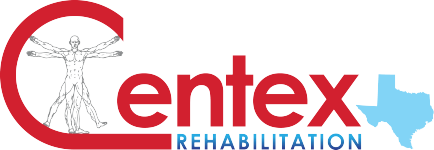Does it seem like you can’t get through the day without having pain in your elbow? You go to lift your laundry basket, pull a door open, or even try to twist off the cap to your water bottle and feel pain or soreness. Elbow pain is one of the most common problems occupational/hand therapists treat. Two of the most common elbow diagnoses are tennis elbow and golfer’s elbow. Depending on the cause and location of your pain, it can be treated easily and effectively with a few simple steps.
Step 1: Identify the location of your elbow pain.
On the outside of your elbow is a bony prominence called the lateral epicondyle. Tenderness at this point is most likely lateral epicondylitis, commonly known as tennis elbow. If you press on the inside of your elbow there is another bony prominence called the medial epicondyle. Tenderness at this point is most likely medial epicondylitis or golfer’s elbow. To understand the “why” behind how tennis elbow and golfer’s elbow are treated you will need to understand the basic anatomy surrounding these conditions. They are both classified as repetitive strain injuries and are actually caused by overuse of the wrist despite the pain being felt in the elbow. Along the dorsum of your forearm (back of your hand side) are the wrist extensor muscles. These muscles control wrist extension which is the motion you would make to give someone a high five or push open a door without a handle. The muscles go along your forearm and connect at the lateral epicondyle. The wrist flexor muscles go along the bottom side of your forearm and cause your wrist to bend forward or down. The wrist flexor muscles connect to the medial epicondyle in the elbow. Elbow pain can occur when there is overuse of the above musculature causing an increase in inflammation of the tendons known as tendinitis.
Step 2: Identify the cause of your elbow pain.
Overuse of the wrist muscles could involve repetitive or prolonged lifting, gripping, or pinching. Sometimes people are able to identify ways in which they may have overused these muscles, including working on an assembly line, carrying heavy boxes, lifting too much weight at the gym, or playing golf or tennis among other sports. Other times it is more difficult for people to identify. You could develop pain after gripping the steering wheel on a long drive or from the way you are sitting at your computer at work. It is important to try and examine how you are using your arms during the day in order to modify and prevent improper posture or arm positioning from occurring in the future.
Step 3: Begin treatment.
Sometimes your elbow pain will go away on its own, which could take several months. However, there are ways to get a head start on treating your elbow pain before it becomes more painful and debilitating. Our occupational/hand therapists would be happy to see you for a complimentary injury screening to help classify your symptoms and recommend whether going
to a doctor and getting a prescription for formal therapy would be most beneficial for you. They can also help you identify what the cause of your elbow pain may be. Lateral epicondylitis and medial epicondylitis are the most common sources of elbow pain, but your therapist can help you decide if further testing if needed for your specific case. In general, there are 4 things you can do for your elbow pain RIGHT NOW. It is a good idea to avoid heavy lifting and gripping to allow your arm to rest and recover. Anything that is causing your elbow pain is most likely making your condition worse and should be avoided.
- Heat
If the pain is chronic and has been going on for at least 1-2 weeks, put a moist hot pack around your elbow and forearm (taking care to avoid direct contact of the heat with the skin). This will bring blood flow and nutrients to the area to help the healing process.
- Stretch
Perform gentle stretching to the forearm musculature. These stretches should be performed in a PAIN-FREE manner. You should feel a slight stretch or pull along the muscles, but elbow pain should not be present. Hold stretch for 10 seconds and repeat 10 times. Stretches should be performed 3-5 times per day.
- Counterforce brace
You may have seen someone walking around with a strap around their forearm. This is most likely a counterforce brace. It helps dissipate the force from the muscles before it reaches the point of your elbow pain. There are several different brands available on the market. For proper fit place the most padded part 2-3 finger widths below the point of your pain (either the medial epicondyle or lateral epicondyle). The brace should fit snug but not too tight to the point where you are cutting off circulation to your hand. The counterforce brace should be worn for all activity.
- Wrist immobilization brace
If elbow pain is severe and/or you have significant forearm pain present, then a wrist immobilization may benefit you more than the counterforce brace listed above. Immobilization of the wrist will allow the wrist muscles to rest completely and assist with putting them in a good position to heal. The wrist brace can be bought over the counter. It should be worn with all activities.
Don’t let your elbow pain go untreated. For more information, please call our office at 254-630-1186 to speak with one of our physical therapists. We would be happy to help get you on the right track.
- Is Your Nighttime Routine The Reason For Your Neck Pain? - July 17, 2019
- Live Broadcast April 8, 2019 - April 15, 2019
- What’s Causing Your Knees to Hurt?It Might Not Be What You Think! - April 15, 2019
